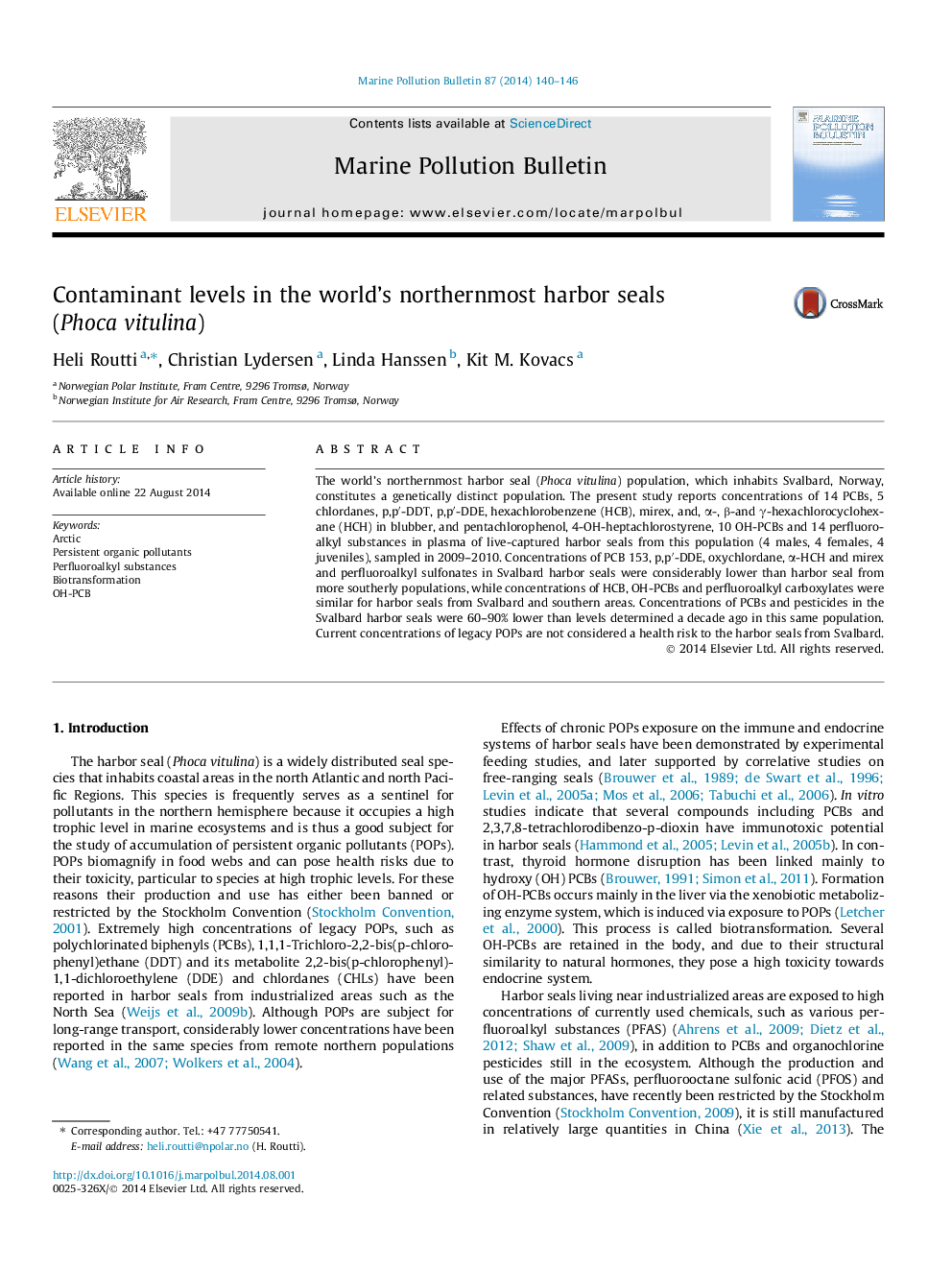| Article ID | Journal | Published Year | Pages | File Type |
|---|---|---|---|---|
| 6357631 | Marine Pollution Bulletin | 2014 | 7 Pages |
â¢Legacy and currently used POPs were measured in harbor seals from Svalbard.â¢Î£PCBs, ΣDDTs, ΣCHLs, mirex, ΣHCHs and ΣPFSAs were lower than in southerly populations.â¢HCB, OH-PCBs and ΣPFCA concentrations were similar to harbor seals elsewhere.â¢60-90% decrease in PCBs, DDE and HCB in Svalbard harbor seals since 1999.â¢Relatively high levels of OH-PCBs in the harbor seals might affect thyroid homeostasis.
The world's northernmost harbor seal (Phoca vitulina) population, which inhabits Svalbard, Norway, constitutes a genetically distinct population. The present study reports concentrations of 14 PCBs, 5 chlordanes, p,pâ²-DDT, p,pâ²-DDE, hexachlorobenzene (HCB), mirex, and, α-, β-and γ-hexachlorocyclohexane (HCH) in blubber, and pentachlorophenol, 4-OH-heptachlorostyrene, 10 OH-PCBs and 14 perfluoroalkyl substances in plasma of live-captured harbor seals from this population (4 males, 4 females, 4 juveniles), sampled in 2009-2010. Concentrations of PCB 153, p,pâ²-DDE, oxychlordane, α-HCH and mirex and perfluoroalkyl sulfonates in Svalbard harbor seals were considerably lower than harbor seal from more southerly populations, while concentrations of HCB, OH-PCBs and perfluoroalkyl carboxylates were similar for harbor seals from Svalbard and southern areas. Concentrations of PCBs and pesticides in the Svalbard harbor seals were 60-90% lower than levels determined a decade ago in this same population. Current concentrations of legacy POPs are not considered a health risk to the harbor seals from Svalbard.
